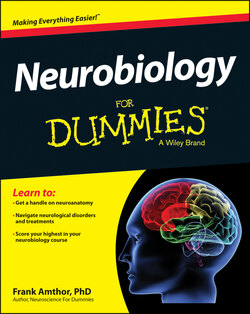Читать книгу Neurobiology For Dummies - Frank Amthor - Страница 57
Protein synthesis
ОглавлениеThe mRNA sequence is not usually directly translated into the amino acid sequence forming a protein. In eukaryotic cells, the mRNA (called primary transcript) undergoes post-transcriptional modification to yield what’s called heterophilic nuclear RNA (hnRNA). Spliceosomes (a combination of nucleoproteins and RNA molecules that help to splice) then remove the introns (noncoding parts of the gene) from the hnRNA. This produces the final mRNA — composed of the coding exons. (See the section “Introns versus exons,” later in this chapter.)
Ribosomes translate the modified messenger RNA and convert its RNA sequence using transfer RNA (tRNA) on ribosomes. Each transfer RNA is a small RNA molecule that is loosely linked to a single amino acid for which it codes. The ribosome binds to the end of an mRNA molecule and then moves along it. As it moves, it sequentially binds to an appropriate tRNA molecule by base-pairing complementary regions of the tRNA with the codon located on the mRNA. The attached amino acid is added to the forming protein, and the tRNA — no longer carrying amino acids — is released. The process then continues to the next mRNA codon.
Within the chromosomes, chromatin proteins such as histones compact and organize DNA. These compact structures guide the interactions between DNA and other proteins, helping control which parts of the DNA are transcribed.
